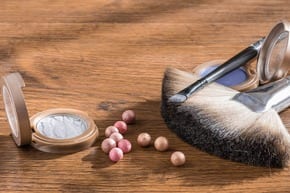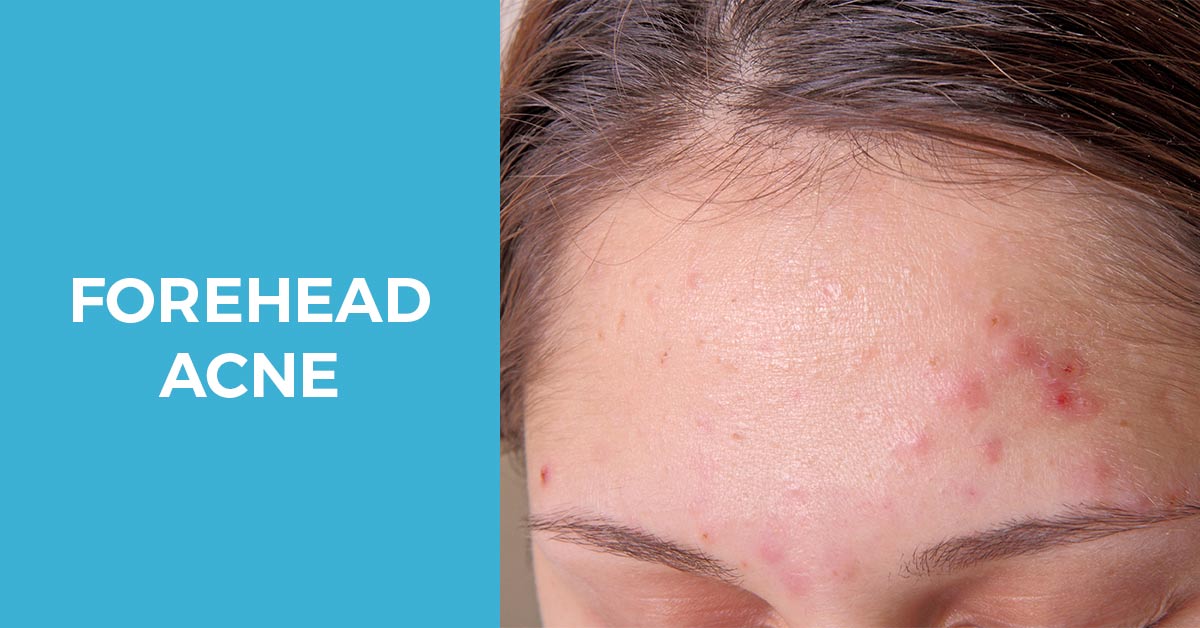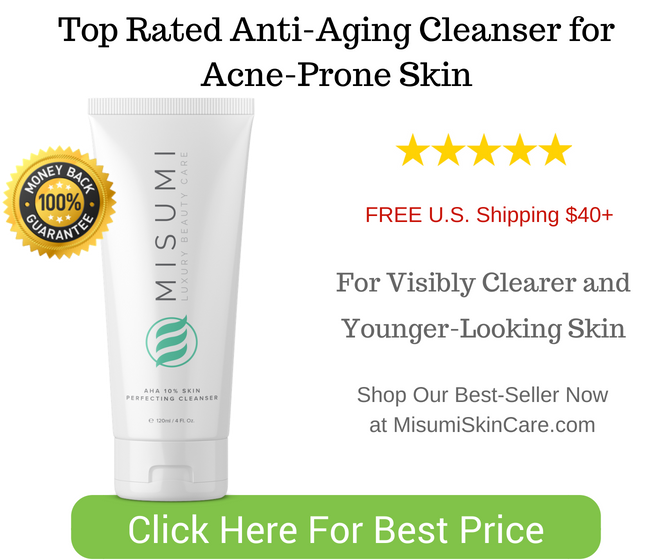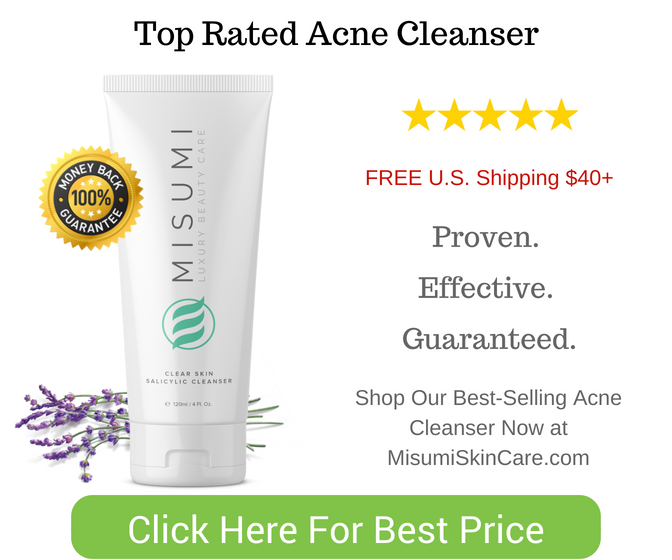Contents
Your forehead is one of the most common places for acne to rear its ugly head, and there are plenty of obvious reasons as to why (e.g. the hair and makeup products you’re using). However, there are also a lot of lesser known causes of forehead acne, which is why we’re going to explore these below.
By understanding what can worsen the acne on your forehead, you can start to tackle these factors one by one. There are also a number of natural remedies, over-the-counter medications, and prescriptions that can speed up the acne removal process. And, to make sure it doesn’t reappear, we’ll also share some handy tips on how to prevent forehead acne.
There are a number of reasons why these spots may appear on your forehead, and their cause is the same as all causes of acne. Your skin is lubricated and protected by sebum, a natural oil that’s produced by the skin. This oil gets onto the surface of your skin through your pores – the small holes that are found in your skin.
Sometimes, these pores can become clogged with dead skin cells, excess oil, and dirt, creating a breeding ground for bacteria. As the bacteria grow, your spots will form, with pustules and papules being the biggest of bacterial infections that can break down your pores’ walls, causing the large bumps that are painful to touch.
This increased oil production can arise due to a range of factors, and, unfortunately, it isn’t just something that occurs in teenagers. Things like stress, hormones, and certain medicines can stimulate your oil glands, no matter what age you are, which increases your risk of developing forehead acne.
Below, we explore some of the primary causes of forehead acne in more detail:
Forehead Acne and Puberty
Puberty is a time when your hormones levels start to fluctuate, which is why acne tends to appear at this stage of your life. These increased hormones stimulate oil production and cause your pimples, with the forehead being the most common area for these first breakouts you’re witnessing.
Forehead Acne and Hair Products
There are so many products for our hair these days, from wave spray to hair oils and that’s not even mentioning dry shampoo!
However, these products can be a trigger for forehead acne, especially if you’re using waxes, gels, oils, pomades, and other styling products. That’s because these products often contain ingredients like coconut oil and cocoa butter, which can add to the oil on your skin. When acne is caused by these types of products it’s known as pomade acne.
Nevertheless, this doesn’t mean you need to ditch all your hair styling products and go for the “au naturel” look.
Instead, you just need to take some additional steps to make sure this oil doesn’t have time to build up on your skin. You can do this by washing your hair every day and trying to keep it off your face. Ideally, wash it at night, so these ingredients can’t clog your pores while you’re sleeping.
Forehead Acne and Makeup
The chemicals found in makeup can irritate your skin, especially if it’s quite sensitive. You may find you suffer from a breakout when you try a new brand or when you wear more makeup than usual. Some foundations will block your pores and can make your skin feel greasy, which may be contributing to the problem. 
Forehead Acne and the Sun
Therefore, try to find makeup products that are labeled as being non-comedogenic as this means they won’t clog your pores.
There’s a common myth floating around that spending time in the sun will reduce your acne – but this couldn’t be further from the truth. In fact, if you’re exposing your skin to too much sunlight, you could be making your skin situation even worse.
Although getting a tan can reduce the appearance of acne, it makes things a whole lot worse over time. Why? Because forehead acne can be aggravated by the heat from the sun as you start to sweat more and produce more oil, which causes inflammation.
Therefore, if you are going to spend time in the sun, choose your sunscreen wisely. As with your makeup, sunscreen can clog your pores so you need to make sure you’re adding non-comedogenic sunscreen to your skin to prevent any breakouts – gel-based sunscreens are best for this.
TIP: Check out our comprehensive guide – how to get rid of acne!
Forehead Acne and Clothing
Although you might not wear headbands or hats all day every day, these items of clothing can cause forehead acne, especially if you wear them for long periods of time.
As you sweat underneath the cap and your makeup collects there, this can lead to a buildup that blocks your pores and causes a breakout. That’s why you’ll also want to watch out for headbands that you have to slide over your forehead to wear. To combat any potential spots, wash these caps and headbands regularly.
Forehead Acne and Pillowcases
Your hair and face are going to come into contact with  pillowcases for around eight hours each night. During this time, oils and bacteria from your mouth and hair are being transferred onto your pillowcases before ending up on your face.
pillowcases for around eight hours each night. During this time, oils and bacteria from your mouth and hair are being transferred onto your pillowcases before ending up on your face.
That’s why pillowcases are another potential cause of acne. To tackle this issue, try to wash your pillowcases as often as twice a week.
For example, did you know that gym equipment can carry more bacteria than a toilet seat? So just imagine what bacteria you’re wiping all over your face after you’ve draped your towel over this equipment!
Even though it’s disgusting, it just highlights your need to be vigilant with the clothing, products, and things you’re touching your forehead with. Instead of using towels that are draped over this gym equipment, opt for a sweatband around your wrist (that you wash after each session) or a facial wipe instead.
All of the factors above (aside from your hormones, of course) can be overcome with the right steps. But if you are concerned about your forehead acne or you think some new medication is causing it, you should seek your dermatologist’s or doctor’s advice.
They’ll also be able to advise whether or not another condition is causing these bumps on your forehead – these include:
- Rosacea – A skin condition that leads to pimples and redness on your face
- Ringworm – A skin condition which is caused by fungi
- Folliculitis – When a hair follicle becomes infected
- Contact dermatitis – When your skin reacts to something you touch or the products you’re using, e.g. clothing or laundry detergent
- Cellulitis – A skin infection that establishes itself around a scrape or cut
- Boils – Painful, red bumps that grow from hair follicles that are infected
Using Lemon to Get Rid of Forehead Acne
All you need is some fresh lemon juice, which you squeeze onto your spots.  Leave this for 5 minutes for it to target your acne. You may notice a stinging sensation but this is an effective way of clearing up your breakout.
Leave this for 5 minutes for it to target your acne. You may notice a stinging sensation but this is an effective way of clearing up your breakout.
However, to add soothing properties, why not mix the lemon juice with honey to create an indulgent face mask? Honey has antibacterial and anti-inflammatory properties, too, which will add to the spot-fighting effects of the lemon juice.
Using Tea Tree Oil to Get Rid of Forehead Acne
When your forehead acne appears, simply squeeze a couple of drops of tea tree oil onto the affected area. You can use tea tree oil directly from the bottle, or if you’d like to create a lighter solution, you could try a homemade face mask, using yogurt or other natural oils to create the mixture. Due to its antibiotic properties, tea tree oil tackles the bacteria causing your acne.
Using Melon to Get Rid of Forehead Acne
Melon is great for cooling down your skin, and with it being a mild treatment, you can leave a slice of melon on your forehead overnight. This will help reduce your acne while also adding to the softness of your skin. Melon’s another great ingredient for face masks, too!
Using Black Pepper to Get Rid of Forehead Acne
A tried-and-tested formula for acne, black pepper is something many of our ancestors will have used to get rid of those pesky spots. All you need to do is mix some ground black pepper with water before applying it onto your acne. Keep it away from your eyes and leave the solution to dry. You may find that this solution burns a little bit, which is why you might want to add the cooling, soothing properties of yogurt to create a face mask. Alternatively, rose water works just as well!
Other natural remedies that can assist with mild acne include:
- Zinc
- Green tree extract
- Azelaic-acid
- Aloe vera
Finally, you might also like to try exfoliation. Exfoliating your face helps to get rid of dead skin cells that could be blocking your pores. However, this isn’t something you should do daily. Instead, try exfoliating two to three times a week to get rid of any dirt and grime that’s built up.
We also love this video by Organic Olivia, which goes into detail about different contributing factors of acne (including diets) and how she overcame these to cure her acne.
Here are some of the different treatments that are available:
Topical Treatments for Forehead Acne
- Benzoyl peroxide – This reduces inflammation, kills bacteria, and helps unclog your pores. It’s best suited for mild acne but you will need to wear additional sunscreen as it can make your skin even more sensitive to the sun’s rays.
- Vitamin A cream or gel – Also known as topical retinoids, these help reduce how much oil your skin’s producing while also unblocking your pores. Perfect for combatting small spots, blackheads, and whiteheads. These also increase your skin’s sensitivity to the sun and they aren’t suitable if you’re pregnant.
- Antibiotic cream or gel – Applied directly onto the skin these are used to kill the bacteria that’s causing your acne. They’re best for inflamed spots and don’t irritate your skin as much as the other gels or creams available. They are, however, on some occasions, less effective on whiteheads and blackheads. And you can only use these for eight weeks due to the risk they pose to antibiotic resistance after this period.
- Azelaic acid gel – Azelaic acid kills bacteria and unblocks pores, which is why it’s effective for people who have mild acne or are struggling with the side effects of some of the other treatments available. It can take a month or more before you notice any improvements but doesn’t affect your skin’s sensitivity to sunlight.
Medication for Forehead Acne
- Antibiotics – Typically used in conjunction with a cream or gel, these oral antibiotics are taken to kill bacteria. They’re effective when treating acne that’s mild to severe, with results being seen after around six weeks. They can only be used for six months due to the risk of you becoming resistant to antibiotics, and they can make your skin more sensitive to the sun. Other side effects include diarrhoea, vomiting, nausea, and mild stomach pains.
- Co-cyprindiol – Used in women, this is a hormonal treatment that helps combat acne by tackling the hormonal condition that could be causing it, e.g. polycystic ovary syndrome. This treatment is effective for severe acne that hasn’t responded to the antibiotic treatment detailed above. This isn’t suitable if you’re breastfeeding or pregnant, with side effects including mood swings, sore breasts, headaches, bleeding in between periods, weight loss, weight gain, and loss of sex drive. There’s also a small risk that it can lead to breast cancer and blood clots later on in life.
- Isotretinoin – This medication is derived from Vitamin A and works like the retinoid creams or gels but provides a much more powerful solution. It’s effective for treating severe cases of acne and can only be prescribed by your doctor or dermatologist. Due to how strong this drug is there are a number of side effects, including blood in urine; joint, muscle, and bone pain; skin rashes; inflammation of the eyes or eyelids; headaches; nosebleeds; and dry and inflamed lips. It also poses a high risk of birth defects, which is why contraception has to be used before, during, and after taking this medication.
- CONCLUSION -
Is forehead acne something you’re dealing with or have dealt with?
What treatments did you find most beneficial and did you find out the cause of your acne?
We’d love to hear your thoughts, opinions, and stories below!




